 When it comes to recycling and upcycling, I love using my imagination to figure out how I can create something new and useful out of an old item. With cases and cases of old books in my garage, I decided to take one and create a secret compartment, otherwise known as a booksafe! I found a hardcover book with a red thumbprint cover, colorful pages inside, and a simple black incognito binding which was the perfect item to home a secret stash. For this DIY, you’ll need an exacto knife, a sponge brush, Mod Podge, and a ruler.
When it comes to recycling and upcycling, I love using my imagination to figure out how I can create something new and useful out of an old item. With cases and cases of old books in my garage, I decided to take one and create a secret compartment, otherwise known as a booksafe! I found a hardcover book with a red thumbprint cover, colorful pages inside, and a simple black incognito binding which was the perfect item to home a secret stash. For this DIY, you’ll need an exacto knife, a sponge brush, Mod Podge, and a ruler.
You want the book you choose to be a hardcover that is at least a couple inches thick, depending what you want to store within the cavity of the safe.
There are millions of books in the world and with the rise of the internet, kindles, blogs, and the like, I see the future of our technology taking over readership. I’ve noticed from my life that I’ve rapidly and subconsciously changed simple routines from reading newspapers to switching to digital news, from looking up a word in a bulky dictionary to typing a quick line within Google search… Times change! And for as much as I love to curl up with a physical book in my lap I think it’s okay to use a creative mind to repurpose them in alternative ways, especially when it comes to upcycling old encyclopedias, outdated science textbooks, etc. Giving you booklovers a little self-assurance here! ✿
I’ve noticed from my life that I’ve rapidly and subconsciously changed simple routines from reading newspapers to switching to digital news, from looking up a word in a bulky dictionary to typing a quick line within Google search… Times change! And for as much as I love to curl up with a physical book in my lap I think it’s okay to use a creative mind to repurpose them in alternative ways, especially when it comes to upcycling old encyclopedias, outdated science textbooks, etc. Giving you booklovers a little self-assurance here! ✿
Read below to follow the 5 easy steps to create your own booksafe. Have fun and enjoy!
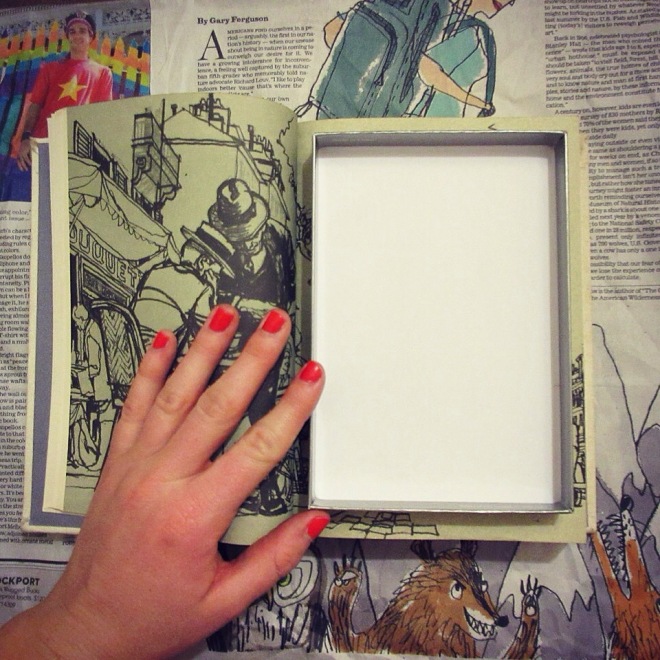
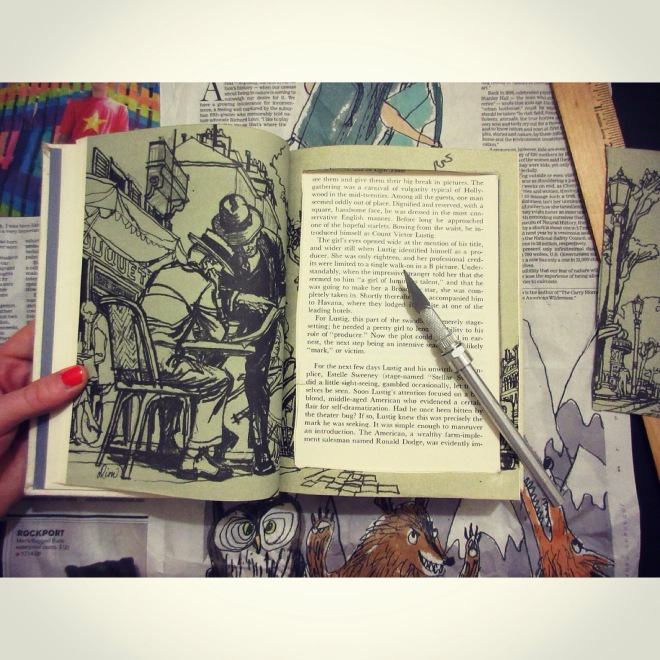
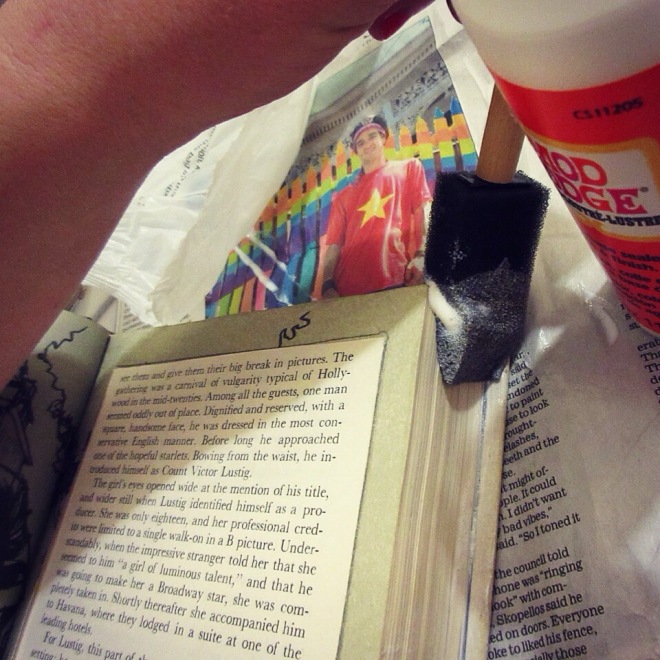

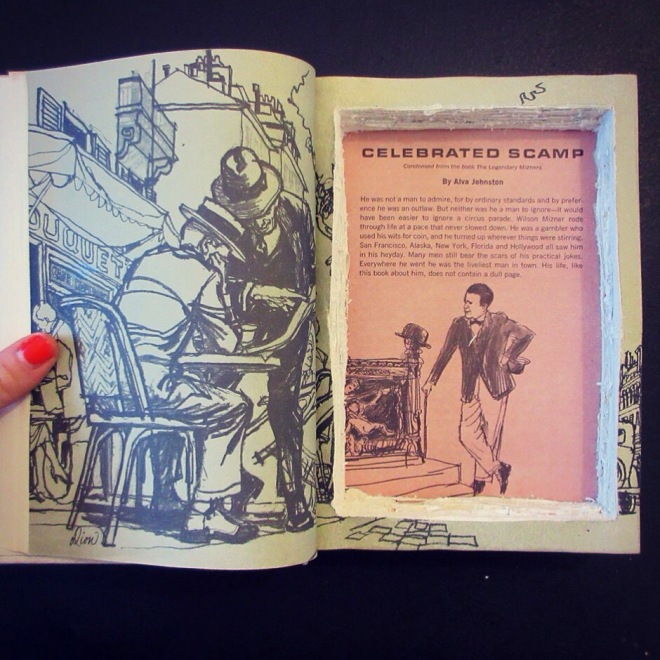

 And, you’re finished! I placed some money and jewelry to give you all the idea of the concept. I think this would be a great space to place some extra cash, a chocolate bar stash, a spare set of keys, or what have you. Do you have any ideas on how to repurpose an old book? I saved the pages I cut out and would love to hear you thoughts on how I could use them to make something. Let me know in the comments!
And, you’re finished! I placed some money and jewelry to give you all the idea of the concept. I think this would be a great space to place some extra cash, a chocolate bar stash, a spare set of keys, or what have you. Do you have any ideas on how to repurpose an old book? I saved the pages I cut out and would love to hear you thoughts on how I could use them to make something. Let me know in the comments!
✿✿✿

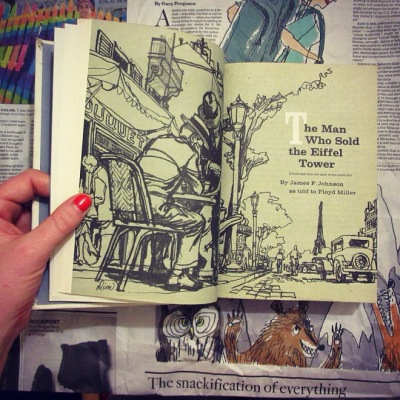
I have always wanted to do this! I thought you had to glue each individual page but it makes sense that you could just do the outside. Yours turned out so well!
— Sam
http://www.diyjustcuz.com
I have always wanted to do this! I thought you had to glue each individual page but it makes sense that you could just do the outside. Yours turned out so well!
— Sam
http://www.diyjustcuz.com
Thanks a bunch! You should give it a try, it was super easy. I think it would be a fun gift for someone 🙂
Thanks a bunch! You should give it a try, it was super easy. I think it would be a fun gift for someone 🙂
Very interesting – I love the concept of reusing things that would either be thrown away or just left on a shelf to be forgotten! It’s like a reincarnation for such things, and the animist in me just can’t resist this sort of possibility! With this project, do you think it might also work to leave the small box used for tracing the initial rectangle inside the book safe? To me, it seems like it might lend a little more stability to the pages, and prevent things from slipping between the pages; but I’ve never worked with Mod Podge … in theory, I could also imagine lining the inside of the safe with the Mod Podge to create a more solid wall, if the box liner idea wouldn’t work. Your thoughts, considering you’ve already done this, would be really interesting: I already have a book in mind, and just need to figure out what the local equivalent of Mod Podge is before proceeding 🙂
Hi, thanks for the lengthy post reply! I actually intended the box to fit snugly within the pages, but my cuts were not very exact since I glued my book before cutting the pages, it was hard to cleanly remove/cut towards the lower end of the cavity. I’d suggest cutting a slightly larger cavity for the box, just half a centimeter or less so it could fit. I’ve also seen on other DIYs that people use plain white glue to paint the edges as a substitute for Mod Podge. The Mod Podge has kept the booksafe really sturdy, and I would recommend painting the inner cavity as well. I hope yours turns out well! Enjoy!!
You’re very welcome for the comment – you put time and effort into your posts, I think it’s natural that a longer comment comes your way as a result 🙂 I was surprised to read that gluing the pages together first resulted in less exact cuts, I would have assumed that the pages already being fixed in place would have yielded a more consistent cutting – thank you for the tip! As it turns out, I have a bit of metal and a magnet that I recently found. This has inspired me to try making my first book safe with a magnetic closing – thanks again for the idea for this project!
Very interesting – I love the concept of reusing things that would either be thrown away or just left on a shelf to be forgotten! It’s like a reincarnation for such things, and the animist in me just can’t resist this sort of possibility! With this project, do you think it might also work to leave the small box used for tracing the initial rectangle inside the book safe? To me, it seems like it might lend a little more stability to the pages, and prevent things from slipping between the pages; but I’ve never worked with Mod Podge … in theory, I could also imagine lining the inside of the safe with the Mod Podge to create a more solid wall, if the box liner idea wouldn’t work. Your thoughts, considering you’ve already done this, would be really interesting: I already have a book in mind, and just need to figure out what the local equivalent of Mod Podge is before proceeding 🙂
Hi, thanks for the lengthy post reply! I actually intended the box to fit snugly within the pages, but my cuts were not very exact since I glued my book before cutting the pages, it was hard to cleanly remove/cut towards the lower end of the cavity. I’d suggest cutting a slightly larger cavity for the box, just half a centimeter or less so it could fit. I’ve also seen on other DIYs that people use plain white glue to paint the edges as a substitute for Mod Podge. The Mod Podge has kept the booksafe really sturdy, and I would recommend painting the inner cavity as well. I hope yours turns out well! Enjoy!!
You’re very welcome for the comment – you put time and effort into your posts, I think it’s natural that a longer comment comes your way as a result 🙂 I was surprised to read that gluing the pages together first resulted in less exact cuts, I would have assumed that the pages already being fixed in place would have yielded a more consistent cutting – thank you for the tip! As it turns out, I have a bit of metal and a magnet that I recently found. This has inspired me to try making my first book safe with a magnetic closing – thanks again for the idea for this project!
i did that to one of my books too! Boy did it take a while for me to do!
Took me a while too! At least 2 hours to cut the pages out. I listened to some music and took my anger out on it so the DIY was kind of therapeutic 😄 haha
I had to do it across a span of a week! hahaha I got so tired, just cutting the pages out haha
i did that to one of my books too! Boy did it take a while for me to do!
Took me a while too! At least 2 hours to cut the pages out. I listened to some music and took my anger out on it so the DIY was kind of therapeutic 😄 haha
I had to do it across a span of a week! hahaha I got so tired, just cutting the pages out haha
Reblogged this on creativitycats.
Reblogged this on creativitycats.
I just wanted to let you know that I tried my hand at this project, and had a great time with it! I blogged about it in my own blog, in case you are interested … you might find it interesting to know, for example, that the main page cutting took me ten minutes, and I had no hand fatigue or cramping 😉 Thank you again!
I really like your post, it’s fantastic! Thanks for letting me know, I definitely had some hand cramping so I’ll take your cutting-advice for next time, Thank you! 🙂
Glad I could return one favor with another!
I just wanted to let you know that I tried my hand at this project, and had a great time with it! I blogged about it in my own blog, in case you are interested … you might find it interesting to know, for example, that the main page cutting took me ten minutes, and I had no hand fatigue or cramping 😉 Thank you again!
I really like your post, it’s fantastic! Thanks for letting me know, I definitely had some hand cramping so I’ll take your cutting-advice for next time, Thank you! 🙂
Glad I could return one favor with another!
This is a great idea! Thank you for posting it!.
Thanks for reading! I’m glad you enjoyed it, it was really fun to make.
This is a great idea! Thank you for posting it!.
Thanks for reading! I’m glad you enjoyed it, it was really fun to make.